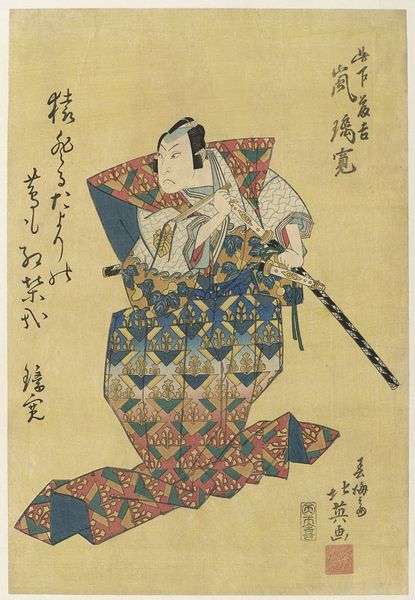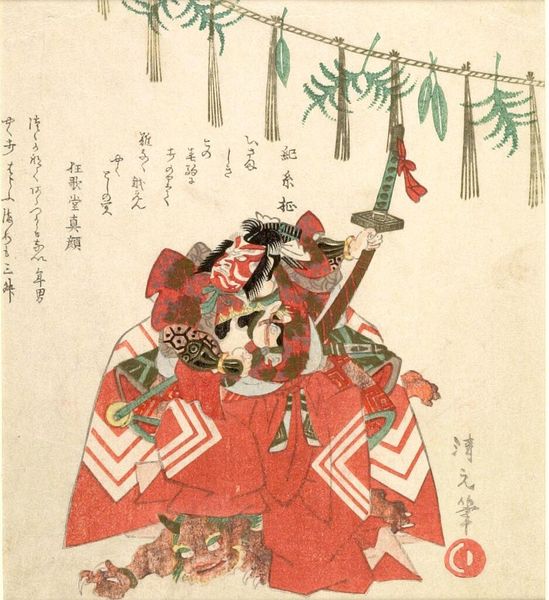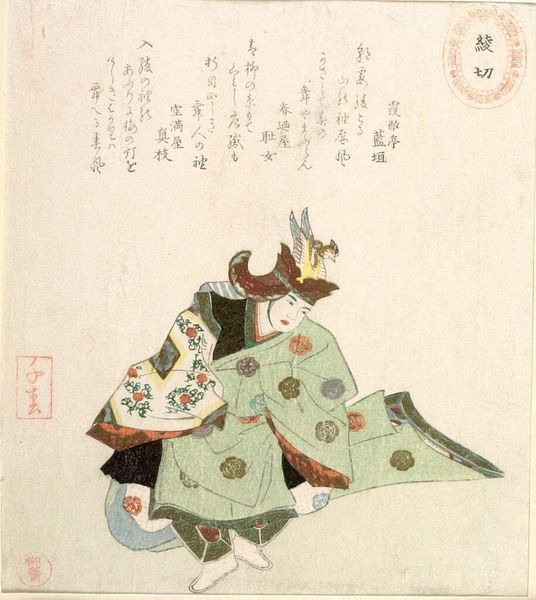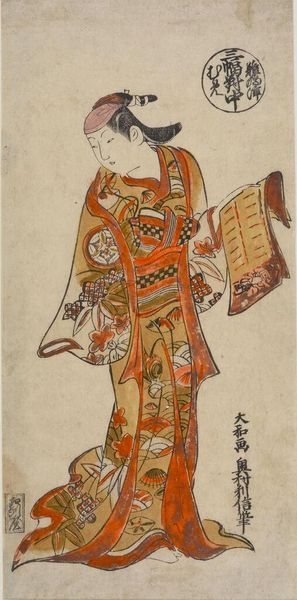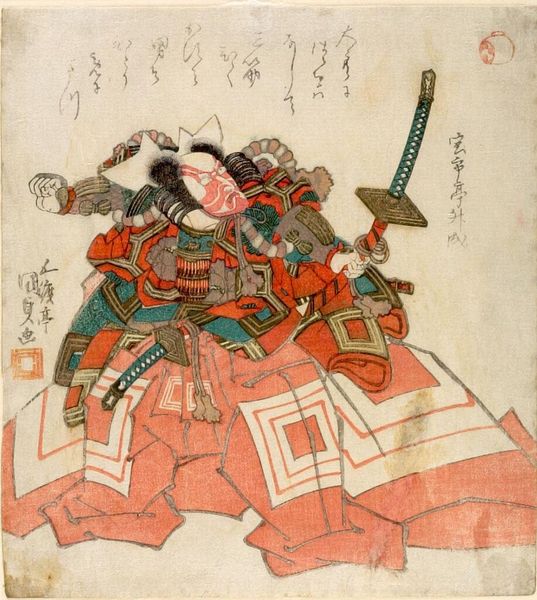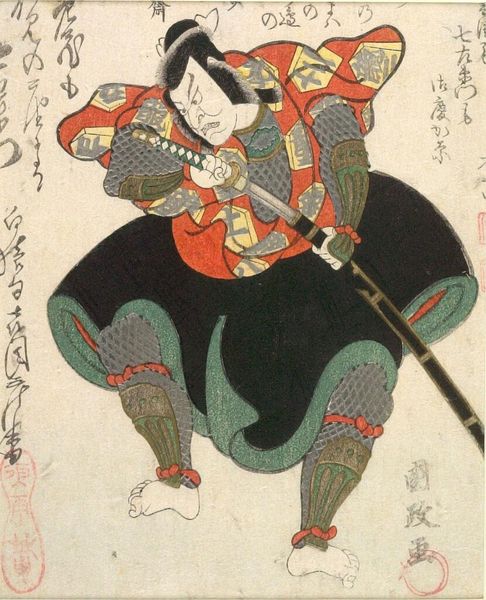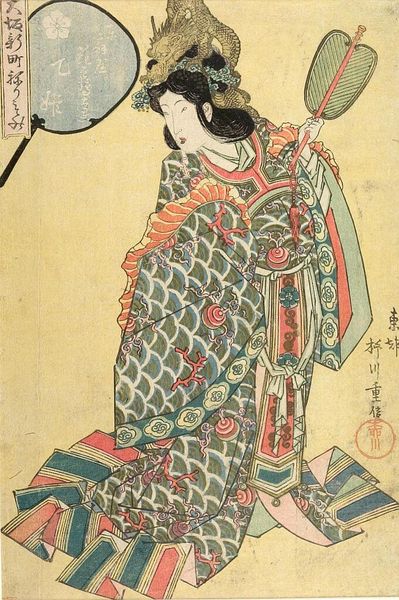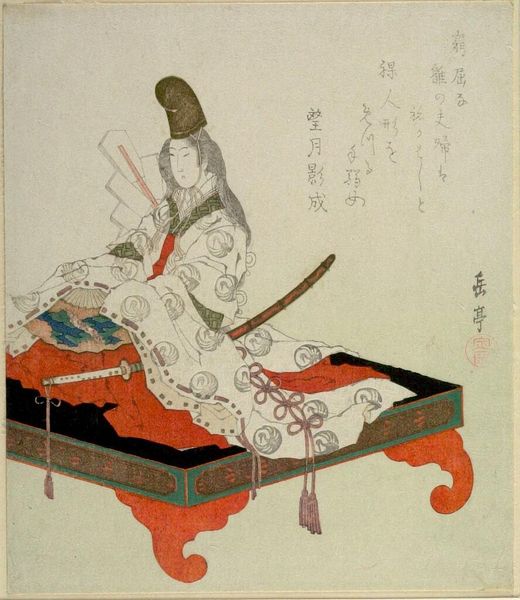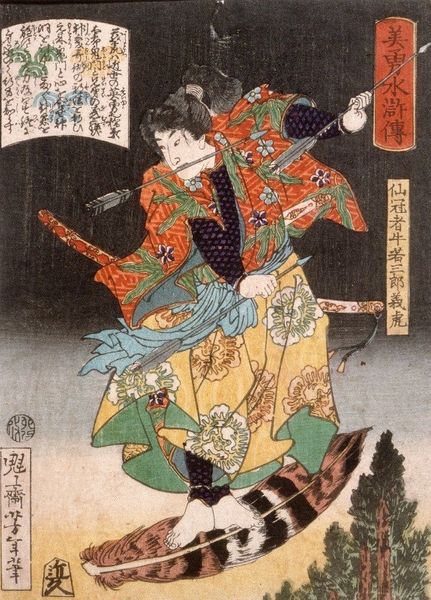
Bugaku Dance c. 18 - 19
Dimensions: Shikishiban
Copyright: CC0 1.0
Curator: Let’s turn our attention to Takashima Chiharu’s “Bugaku Dance,” a shikishiban print housed here at the Harvard Art Museums. It depicts a dancer with a sword, assuming a dramatic pose. What strikes you first? Editor: The tension! The diagonal of the sword against the figure’s kneeling stance creates such a dynamic composition. It feels active, almost aggressive. Curator: Woodblock prints like this one were, of course, a commercial venture. We need to consider the skilled labor involved in carving the blocks, the paper production, and distribution networks that made this affordable art. Editor: Absolutely, and we shouldn't separate that from the cultural context. Bugaku dance was historically performed at the imperial court, and later became more accessible. This print perhaps signifies a desire for broader participation in elite art forms? Curator: A fascinating thought, indeed. The materiality, the way the ink sits on the paper, gives it a depth despite its relative simplicity. Editor: And the dance itself, even in this static image, embodies resistance—challenging societal norms through movement and expression. Curator: So, we're left with a complex interplay of production and performance, each informing our understanding of this visually compelling work. Editor: Precisely. It’s about who gets to participate in culture and how we interpret those performances today.
Comments
No comments
Be the first to comment and join the conversation on the ultimate creative platform.


